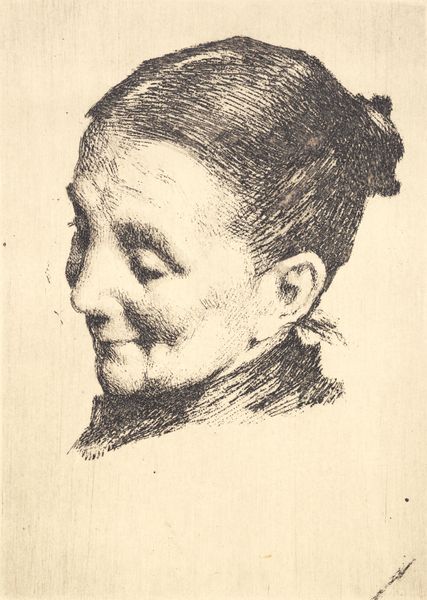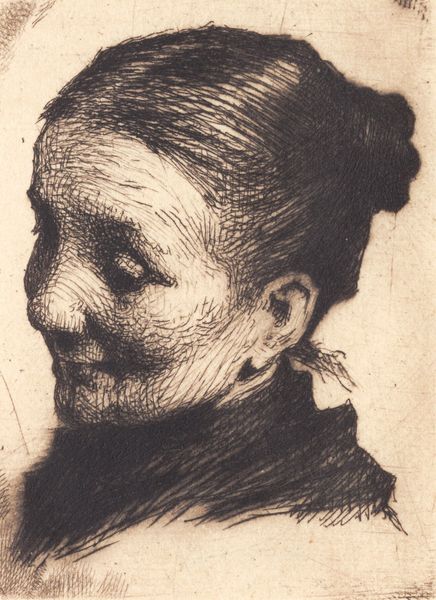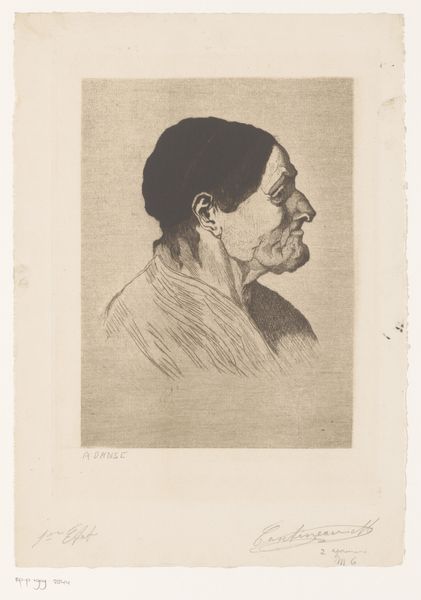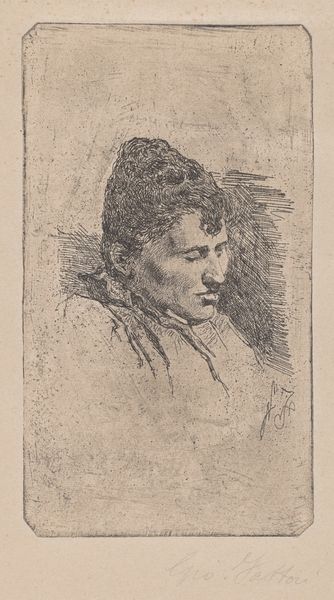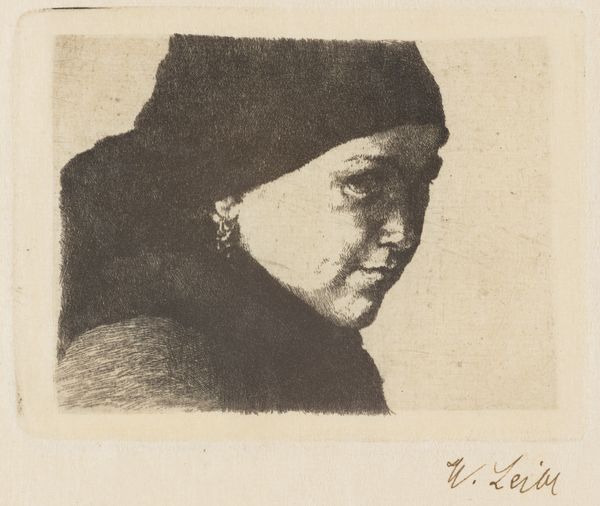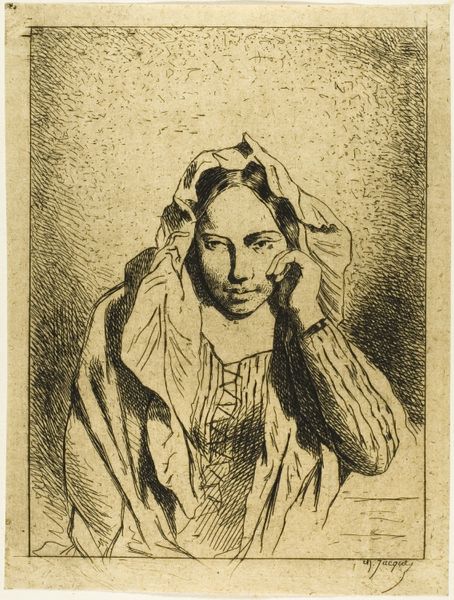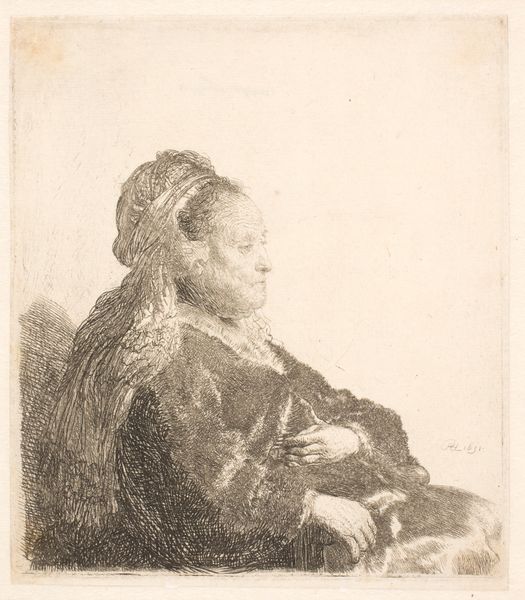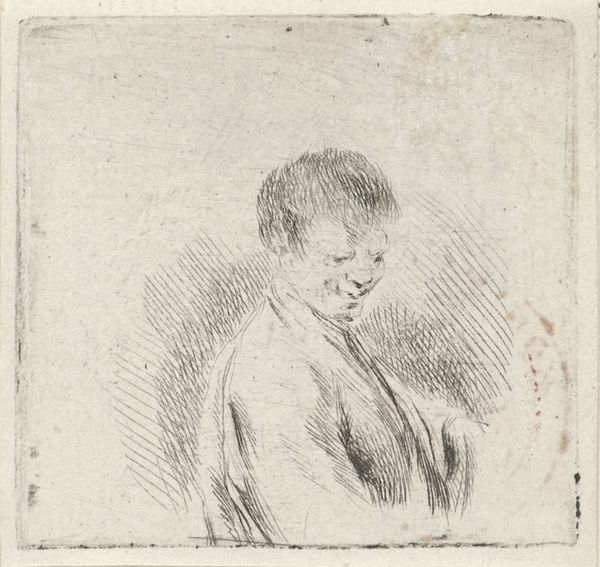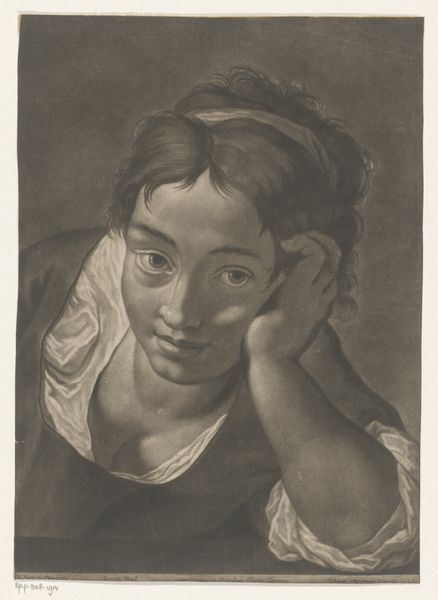
Hoved af en ældre kone med nedadrettet blik, vendt mod venstre 1865 - 1917
0:00
0:00
print, etching
#
portrait
# print
#
etching
#
realism
Dimensions: 178 mm (height) x 128 mm (width) (plademaal)
Curator: This is "Head of an Elderly Woman with Downcast Gaze, Turned to the Left," a print etching by Frans Schwartz, made sometime between 1865 and 1917. What are your initial impressions? Editor: Stark. The limited tonal range makes her look burdened. You feel like you're peering into a very private, reflective moment. I'm struck by the raw materiality of it—you can almost feel the roughness of the etching plate. Curator: That tactility speaks to the process itself. Etching requires a very physical engagement with materials—the copper plate, the acid, the tools used to create those lines. There’s labor embedded within that image. But beyond process, I see an echo of social history. This portrait participates in a long tradition of depicting the aged, not often royalty, offering dignity through art to a population generally pushed to the margins of society. Editor: That's an interesting point, that access to dignity could be increased or limited simply through representation, who got to see themselves reproduced. Thinking about the means of production also, what sort of workshops was this made in? Was there a collective labour going on that formed the style of its representation, or were more people employed as apprentices, maybe? I wonder if any apprentice assistance in printing contributes to what some perceive as rougher styles. Curator: It brings into focus the hierarchies inherent in art production and also dissemination; prints have historically offered a more accessible way for the broader population to engage with art. Were those apprentices allowed to use the equipment alone after some time? Were their lives mirrored in the print? What sorts of labor exploitation happened in the world of ateliers, that contributed to the accessibility to arts for broader publics? Editor: Precisely! We're touching upon the inherent class dynamics present in 19th-century art and the means of image production and how accessible they truly were, at least without the price of being exploited and/or becoming more socially marginalized. I look at her, at her downward gaze, and ask, who allowed her this moment of vulnerability and exposure and under what circumstances? Curator: Well, considering our chat today, seeing the artwork in the broader material reality of the work that produced it and the markets that sustained them, my interpretation and perhaps even hers changes just slightly.
Comments
No comments
Be the first to comment and join the conversation on the ultimate creative platform.
